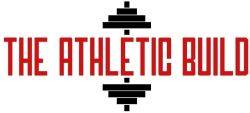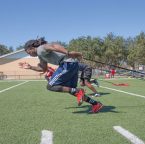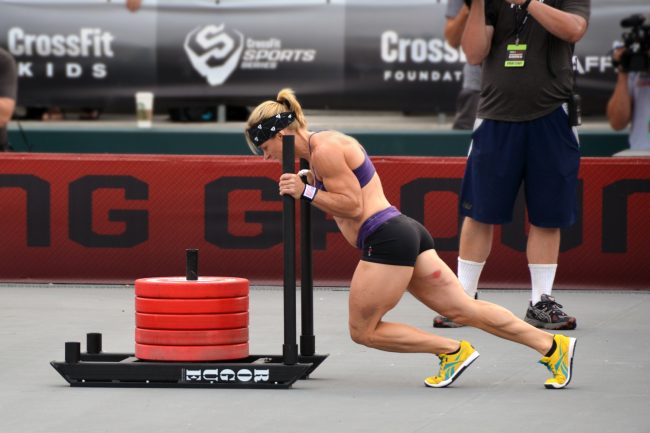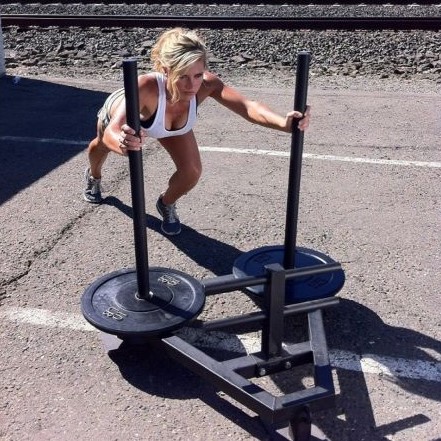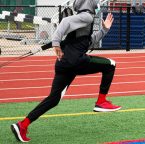Weighted sled training isn’t new, but it still feels underrated. You won’t find many people doing it at your average gym, and that’s a shame, because this thing is a powerhouse.
It builds muscle. It boosts speed. It makes your lungs feel like they’re on fire in the best way possible.
Whether you’re looking to get faster, stronger, or just shake up your stale training routine, the sled has something for you. And once you push that thing across the turf a few times, yeah… you’ll get it.
Let’s break it down.
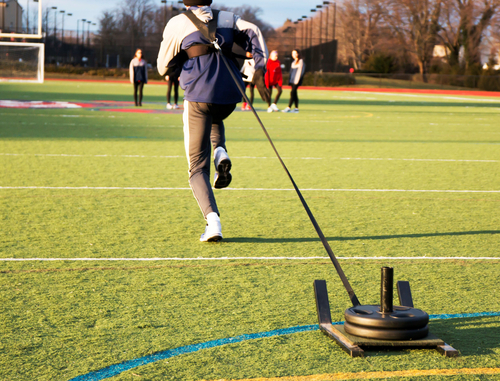
What Is Weighted Sled Training?
Alright, so picture this. You’re at the gym or maybe out on a turf field, and there’s this heavy metal sled just sitting there. You load it up with some plates, grab the handles, and start pushing. Or pulling. Either one works. Either one hurts.
It feels kind of like pushing a dead car across a parking lot. Except this time, you’re doing it on purpose. And weirdly, you’re into it. Once your legs are burning and your heart is pounding, you realize this thing isn’t just for show. It hits your whole body and leaves zero muscle untouched.
And here’s the best part. You’re not limited to one or two moves. There are all kinds of ways to use it, and we’ll break those down in a bit.
Where Did Sled Training Come From?
This whole sled thing didn’t start in a gym. It started in the woods. Think tough-as-nails Scandinavian loggers dragging trees through snow. No gear, no supplements, just raw horsepower. That kind of work builds legs and backs that don’t quit.
Eventually, athletes saw the potential. It made perfect sense for bobsledders, since sled pushing is literally their sport. From there it spread to football training, rugby workouts, CrossFit gyms, and anywhere else that values real-world strength.
Now the modern version is the prowler sled. No wooden frames or rusty chains. Just a heavy steel base with upright posts or low handles that let you push, pull, or drag with as much weight as you can handle.
Whether you’re trying to run faster, hit harder, or just shake up your training, this is the kind of tool that delivers.

Related: 13 Sled Workouts For Superior Conditioning
Benefits of Weighted Sled Training
Acceleration When Sprinting
So, a bunch of studies have been diving into whether sled pulls can actually make you sprint faster. The first study back in 2013 said that the group pulling heavier sleds got faster in both 5- and 10-meter sprints, blowing the light-sled group out of the water. Basically, heavier loads didn’t ruin their speed; they improved it.
Another study pushed it even further by having soccer players pull sleds loaded with 80% of their body weight. Guess what? Those guys also got a serious bump in their sprint power. The lesson? Going heavy is where it’s at.
But it doesn’t end there. A 2020 study with high schoolers also found that the heaviest sled group got the most gains, especially in the first 10 meters. So it looks like, whether you’re a pro or a high-school athlete, loading up that sled is a solid move for better sprints.
You’re probably wondering, “How heavy can we go before it’s too much?” Well, a 2016 study by Winwood and the gang tried to find that sweet spot. They had rugby players doing sled pulls at 75% and 150% of their body weight twice a week for two months.
Turns out, the lighter load (the 75% one) actually did a significantly better job of boosting sprint speed. So, yeah, going heavy has its perks, but there’s a limit. Piling on 150% of your body weight? Overkill, and not in a good way.
For sprint acceleration, I would keep the sled weight between 23 and 75% of your body weight for optimal results.
Sled Training Builds Muscle and Strength
Feeling stuck in a rut with your usual leg day routine? Craving something that’s not just another squat or leg press? Sled pushes and pulls might be the plot twist you’ve been searching for in your fitness story.
These moves are dynamite for hammering those lower body muscles. We’re talking glutes, quads, hamstrings, and even the often-neglected calves. But it’s not just a leg game; your core gets a solid workout too. Picture your abs and lower back kicking in to help stabilize as you move that weighted sled across the turf.
Beyond just muscle-building, sled training offers a variety that’s hard to beat. You can switch between pushes and pulls, change up the weight, or even mess around with the distance and speed. So you get a tailored workout that can evolve with you, keeping things fresh and challenging. It’s the whole package—strength, endurance, and a dash of excitement for good measure.
Weighted Sled Training Builds Endurance
You know how sometimes you’re in the middle of a game or a run, and you just hit that wall? Your legs feel like they’ve got nothing left? Well, sled training can be your secret weapon for pushing past that. When you’re hauling a weighted sled over a distance, it’s like you’re asking your muscles to keep the party going just a little bit longer each time.
What really happens is you’re training your muscles to deal with lactic acid better. That’s the stuff that makes your muscles scream during intense activity. The more you train with the sled, the better your body gets at buffering that lactic acid, letting you keep up the intensity for longer periods.
And the coolest part? It doesn’t just build endurance in your legs. Your heart and lungs get a solid workout too, which is pretty much the essence of endurance. So, think of sled pulls and pushes as that gritty training montage in every sports movie: tough but oh-so-worth it for the endgame.
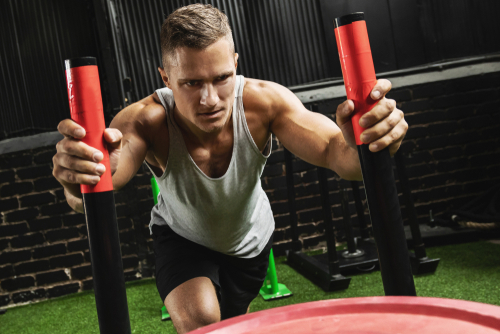
Increases Power
Weighted sled training is a dynamite way to ramp up your power game. When you’re pushing or pulling a loaded sled, you’re basically doing a full-throttle, explosive movement that demands a lot from your muscles in a short span of time. This kind of work taps into your fast-twitch muscle fibers, the ones responsible for generating force quickly.
In technical terms, sled training improves your rate of force development, which is a fancy way of saying you’ll get better at using your strength swiftly and efficiently.
This can be a game changer in sports where quick bursts of power are key—think sprinting in track, exploding off the line in football, or driving through a tackle in rugby.
And because you’re pushing against resistance in a functional way, it translates really well to various athletic endeavors. It’s not just about being strong; it’s about being strong quickly, and that’s where the real power lies.
Adds Variety To Your Training
Honestly, who doesn’t get bored doing the same old workouts day in, day out? That’s where weighted sled training comes in.
It’s like a shot of adrenaline for your routine and, let’s be real, it’s just more fun than doing another set of whatever you were doing before. And we’re not just talking about one monotonous movement here. There are so many ways you can train with a sled—pushing, pulling, sprinting, you name it.
Now, picture strapping on a ton of weight to that sled and giving it a big push. You’re not just moving metal; you’re pushing your limits.
And when you do that, you can’t help but feel like an absolute boss. It’s not just about the physical gains; it’s that mental boost you get from conquering something tough. That feeling? Yeah, that’s you leveling up in the gym, and possibly in life too.
Low Impact
Sled work is easy on your joints, making it a go-to for people recovering from injuries or who just want to play it safe. It’s much more forgiving than things like running or jumping, which can be hard on your body.
The best part is, that sled work is super versatile. No matter your fitness level, you can tweak the weight, distance, and how hard you go to make it work for you. It’s like the Swiss Army knife of workouts—there’s a setting for everyone.
Related: Best Weighted Sleds On The Market
RelatedL 13 Weighted Sled Workouts for Superior Performance
Exercises You Can Do With A Weighted Sled
Let’s start off with a few basics and then get into the fun stuff.
Sure, here’s a rundown of some killer exercises you can do with a weighted sled and a quick snapshot of each:
- Sled Push: Basically, the bread and butter of sled training. Load up the sled, stand behind it, and push it forward using your legs and arms. Hits quads, glutes, and shoulders hard.
- Sled Pull: Flip the script and pull the sled toward you using a rope or strap. This works the back, biceps, and hamstrings.
- Sled Drag: Strap yourself to the sled and walk forward, pulling it behind you. Engages your hips, glutes, and lower back.
- Sled Row: Attach a rope to the sled and row it toward you, kinda like a seated cable row at the gym but way cooler. Focuses on the lats and biceps.
- Sled Sprint: Lighten the load and sprint with the sled behind you. Gets the heart rate up and works on your speed and explosive power.
- Sled Bear Crawl: This one’s a killer. Attach the sled to your waist and get down on all fours. Crawl forward like a bear, pulling the sled behind you. Total body workout.
- Sled Lateral Drag: Stand sideways to the sled and drag it in a lateral motion. Excellent for hitting those oft-neglected obliques and improving agility.
- Sled Chest Press: Load the sled and press it away from you as you would in a bench press. A solid way to target the pecs without the bench.
- Sled Tricep Extension: Stand behind the sled, lean forward and push it away using just your triceps. It’s like skull crushers, but less scary sounding.
- Sled Single-Arm Row: Attach a rope and pull the sled toward you using one arm at a time. Works on muscle imbalances and focuses on unilateral strength.
- Sled Torso Twist: Attach a rope to the sled and hold the other end. Twist your torso to pull the sled sideways. Fantastic for the core and rotational strength.
- Sled Reverse Drag: Walk backward, pulling the sled toward you. Hits the quads differently and works on your balance.
On top of that, you can even get a wheelbarrow attachment for some sled that converts them into a weighted wheelbarrow for you to walk, and some attachments make it like you are pushing a heavy lawnmower.\
Final Word
In conclusion, weighted sled training offers a wealth of benefits for athletes across the board. Its low-impact nature is a relief for those who want to protect their joints, making it an ideal choice for those in injury recovery or prevention modes.
Plus, the adaptability of sled work means it can be tailored to fit anyone’s fitness level. In a world full of one-size-fits-all fitness regimens, the customizable nature of sled training stands out, making it an invaluable addition to any athlete’s training toolkit.

Ryan is a former college wrestler and lifelong fitness fanatic with over 25 years in the industry. He’s run half marathons, tackled mud runs, placed in body transformation contests, and coached everything from wrestling to girls’ soccer.
Along the way, he’s tested hundreds of supplements and built a deep well of supplement knowledge. His work has appeared in Muscle & Strength, Testosterone Junkie, The Sport Review, and more. Today, he’s the editor-in-chief of this site, still training hard and helping others reach their goals. Connect with him on LinkedIn below.
